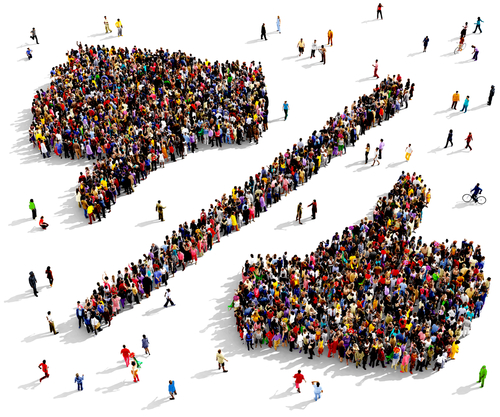Improving access to justice via technology

Fredric Lederer
“Access to justice” is an interesting phrase. It suggests a right to justice, one that is generally accepted as a fundamental part of American culture and which is recognized in our Constitution’s Bill of Rights. But, in today’s world, access to justice is too often only theoretical.
Consider only some of the factors that constrain access:
- • People often do not know where to find legal rules and information about their rights, nor how to understand them if they do.
- • Most of our population does not understand how law is made and interpreted.
- • Many people do not know how to use the legal system.
- • Many potential litigants do not trust aspects of the justice system, whether informal or formal.
- • Most cannot afford to retain counsel, and we have too few lawyers able or willing to supply pro bono services.
- • Even if counsel is available or unnecessary, related expenses may be too costly for many.
- • Native English speakers often cannot understand legal rules, documents or proceedings.
- • Lack of English capability hinders many from knowing how to access the legal system, how to work within it, or even to trust it.
- • Those with disabilities may not even be able to physically enter and traverse key facilities, let alone properly communicate.
- • Resolution of legal issues is often so slow as to result in no solution.
And, of course, none of these take into account various forms of racial, ethnic, gender, sexual orientation, gender identity, and religious bias. “Justice” itself is open to pragmatic definitional problems. “Justice” is more than a court result. It can include a host of informal and formal procedures.
Given that there are no signs that our legislatures will provide sufficient funding to resolve these problems, we must look for ways by which we can at least help alleviate the problem. Technology is one such solution, and the remainder of this essay addresses some of the ways that technology can enhance access to our legal system and courts. In doing so, I make no claim that technology is better than a properly funded legal system with full access to lawyers. Rather, the question is: “Given pragmatic realities, could this form of technology help, even if it is imperfect compared to our ideal?”
INITIAL INFORMATION AND ASSISTANCE
Although we need to continue to recognize that there are those without technology access, it does appear that a vast percentage of our population does have access to at least the internet in one form or another. The internet includes a vast amount of free legal information, whether in the form of published statutes, regulations, or cases, as well as myriad explanations of the meanings and implementations of legal rules. Concededly, even if this information is accurate, which it may not be, nonlawyers frequently do not know how to verify or interpret this data. However problematic it may be, the internet as a resource is usually better than no access at all.
Various courts, nonprofit organizations and commercial firms provide either pro bono or legal assistance on the internet. This can include basic or quasi-intelligent online questionnaires that when completed can result in court papers ready for signature. When artificial intelligence is added, as is the case for some forms of predictive technology, not only might this become more accurate and useful, it could advise the potential litigant of the chances of success.
Court websites advise litigants of basic court information, potentially including docket information. Online audio-video materials may explain court procedure and critical legal rules such as the burden of proof. Some courts have provided access to their proceedings via web streaming, perhaps offsetting the distrust of judicial proceedings that so often are shown on commercial television as biased and corrupt.
Those with limited or no vision or hearing can use technology to access information posted on the web.
IN COURT
Setting aside electronic information displays that supply basic location and procedural advice to litigants and others, likely the most important technological assistance available for self-represented litigants in the courtroom is the smartphone. Increasingly, case evidence exists in the form of emails, texts, and recorded images and audio. Family law and small-claims-type cases likely are especially reliant on this information. The self-represented litigant is likely to want to prove the case by showing the judge smartphone data. Of course, this can be problematic for the court. On the one hand, many courts prohibit nonstaff and nonlawyers from bringing cellphones or computers into the courthouse or courtroom. On the other hand, even if phones are permitted, the court may be faced with the need to copy data from the phone if it is needed by the judge or for a court record.
Interpretation is often a major problem in court, especially self-represented litigants. We have a compelling need for foreign language and sign language interpretation, and we clearly have too few qualified interpreters, especially certified ones. Courts have used telephone-based remote interpreting for years. Remote interpretation potentially makes available interpreters from elsewhere in the United States or even other countries. This not only increases the effective number of interpreters but also the number of available languages. New technology permits use of videoconferencing technology for remote interpretation, which permits sign language interpretation as well. The Center for Legal and Court Technology conducted experiments in 2016 demonstrating that although there is no known legal requirement that interpreters be physically present in the courtroom, people are more comfortable with remote interpretation when they can see the interpreter on screen.
Videoconferencing permits other useful forms of appearances. Obtaining witnesses to testify can be difficult given distance—or competing medical, family, or employment needs. Having a witness appear remotely, whether via commercial-quality equipment or Facebook or Skype, can increase the probability of testimony and decrease cost and delay. Although remote witnesses can be required to appear from other courthouses, complete with a court officer standing by, would we need such protections for a small claims-type proceeding? And, of course, we don’t need a courtroom at all. For minor cases, including traffic matters, why not have an entirely virtual proceeding in which parties and judge appear in an electronic environment? In time of urgency, why not use remote appearances for protective orders? This is not science fiction but in some places today’s reality.
Technology is not a panacea, and we need to remember that often technological efforts to enhance access to justice ought to be complemented by more fundamental improvements in our legal system. But especially as artificial intelligence linked to proper data and creative algorithms improves, we may well be able to substantially enhance access to justice for those who today have little or no access at all.
Fredric I. Lederer is Chancellor Professor of Law and Director of the Center for Legal and Court Technology, formerly the Courtroom 21 Project, at William & Mary Law School. Professor Lederer’s areas of specialization include legal technology, evidence, technology-augmented trial practice, legal issues arising from artificial intelligence and related technologies, criminal procedure, military law, and legal skills. Professor Lederer is the author or co-author of numerous books and articles, and two law-related education television series. As founder and director of CLCT, Professor Lederer is responsible for the McGlothlin Courtroom, the world’s most technologically advanced trial and appellate courtroom.




